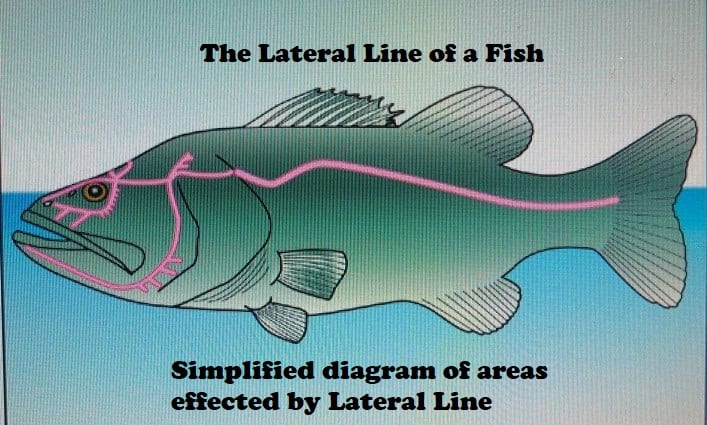By Jake Bussolini
For us old timers (At 83 I think I can define myself that way.) who learned how to fish from our Fathers along a quiet river bank on a misty Saturday morning, making any kind of noise was forbidden. Quiet was the law and there was no thought of breaking that law. Even when fishing from a boat, my Dad always insisted that silence was golden and for us that was the real golden rule.
But that was back when we lived with party lines on our phone system and gasoline was 20 cents a gallon. We never dreamed that changes would come along that would require us to write new rules in life that would change some of the most basic beliefs that we grew up with. Well here we are now being asked to believe that creating noise while fishing is the latest new discovery that will revolutionize the sport of fishing.
Prior to 1970, most underwater sound research was conducted by the US Navy to support its research on developing more effective Sonar technology. As new and better hydrophone equipment evolved, many private agencies and Universities
Started developing their own research programs involving underwater sound transmission. For the most part, these studies centered around determining the methods by which underwater life communicates with and between each other. There was little interest from anglers toward using the results of these studies in their daily fishing activities.
It has been widely known that water life such as Dolphins have their own unique methods of communicating with each other with some advocates believing that they have developed a method of communicating with humans. Also now moving from rumor to fact is knowledge that many fish such as fresh water Drum make recognizable sounds that are easily heard without the use of special equipment. Experienced anglers also regularly hear Catfish making groaning sounds when taken out of the water. Are these and other fish trying to communicate with their captors or are they attempting to warn other members of their species of pending danger?
Whatever the motives, there is little doubt that fish and other underwater life do make sounds. We may not be sure if these sounds are a method of communication between fish or simply a part of their system that causes periodic transmittal of simple sounds like moans or groans.
Studies have shown that some species of fish make recognizable sounds when attempting to attract a mate during spawning periods. Other studies have proven that that fish sounds are louder and more pronounced when the fish appear to be stressed or panicked. Many fish species emit loud sounds when swimming in large schools attempting to feed or when these schools are attacked by other predator fish.
With the evidence mounting that fish behavior is and can be altered by the use of sound, the real question relates to which are the good sounds and which sounds are the bad ones. What are the sounds that anglers can use to attract the fish to their fishing locations and what sounds will scare the fish away?
For many years anglers have known that although fish have no ears as we know them, they have a very sensitive system that picks up noise from fairly long distances. Scientists know that sound travels four times faster in water than in open air. The system that picks up and processes sound in a fish is called the Lateral Line System, made up of several elements in the body of the fish. In its simplest form it is illustrated in the diagram below.
Working together with tiny hair like nerves located along the side of the body and using elements of their swim bladder, fish can detect sound at great distances. BUT, are all sounds bad sounds? If you drop your coffee mug on to the bottom of your boat, that is a bad sound and will certainly send a nearby fish scampering away, but what if you gently tap on the bottom of your boat with a wooden stick, it has been proven that a steady sound like that is actually a good sound that may attract the attention of a fish.
A few years ago, I was asked by its inventor to test what is now known as a Hydrowave. This electronic unit costing nearly $400 emits sounds into the water representing noises made by schooling bait fish in different states of excitement. Testing the unit for more than a year, I verified that the unit did indeed increase my catch rate by as much as two to one.
I recently saw an advertisement for a “First Call” unit which, much like the Hydrowave emitted sounds of panicking bait fish. This unit sells for about $100.
There are other gadgets on the market that sell for as little as $20, all with the same theory, that certain sounds, if repeated regularly, will draw the attention of nearby bait fish and predator fish. Experiments have been done with humming, tapping and chattering noises, all producing positive results, appearing to draw the attention of nearby fish. Most of these experiments, like the existing available units seem to work best drawing the fish up from deeper water between 30 and 50 feet deep.
The question that intrigues me is which noises attract fish and which ones frighten them. I have developed my own plan to answer this question. I have developed a design of a noise making unit that I will attach to my pontoon boat. The hollow metal pontoon will serve as a metal amplifier of a tapping sound. I will keep detailed records of my catch rates with this unit operating and non-operating and I will certainly report the results back in a future article for the enjoyment of my readers.
Jake Bussolini is a freelance writer who has written eight books about fresh water fishing. His books can be seen or purchased at www.booksbyjake.com.

